 Most viewed - GIFU 岐阜県 Most viewed - GIFU 岐阜県 |

Mitsubishi T-2 Blue Impulse aerobatic jet.3 views
|
|
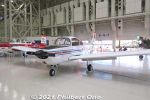
Fuji FA-200 Aero Subaru monoplane from the 1960s.3 views
|
|
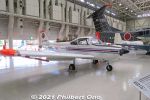
Fuji FA-200 Aero Subaru monoplane from the 1960s.3 views
|
|
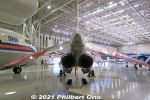
3 views
|
|
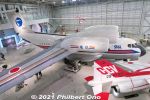
NAL Asuka STOL Research Aircraft3 views
|
|
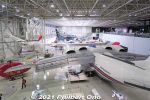
NAL Asuka STOL Research Aircraft3 views
|
|
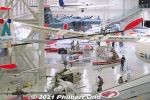
3 views
|
|
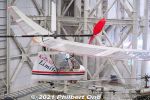
HYPER CHick "KoToNo Limited" is a pedal-powered plane flown by a woman. It was named after the woman pilot, HORI Kotono. Set a new record in July 1992 in Shizuoka Prefecture. 3 views
|
|
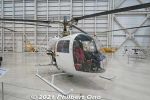
3 views
|
|
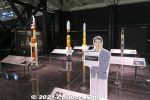
Japan's rockets, all unmanned. Cutout of Itokawa Hideo, aeronautical engineer.3 views
|
|
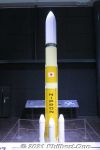
H3 rocket (1/20 scale model). H3ロケット(1/20模型)3 views
|
|
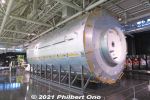
Japan's Kibo module (full-scale replica) for International Space Station (ISS). 日本実験棟「きぼう」3 views
|
|
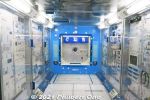
Inside Japan's Kibo module (replica) for International Space Station (ISS).3 views
|
|
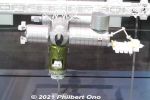
On the International Space Station (ISS), Japan's Kibo module is attached on the right and the Kounotori cargo vehicle is attached on the bottom.3 viewsKounotori was developed by the Japan Aerospace Exploration Agency (JAXA or Japan’s NASA) and used from Sept. 2009 to Aug. 2020 as expendable cargo spacecraft for delivering supplies and experiments to the International Space Station.
|
|
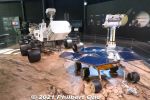
Mars rovers (full-size replicas). Foreground is 1/10 scale model of IKAROS (Interplanetary Kite-craft Accelerated by Radiation Of the Sun). 火星探査車マーズ・エクスプロレーション・ローバー (1/1模型)3 views
|
|

Improved aircraft technologies and materials have improved the plane's range and efficiency.3 views
|
|

Passenger planes of the future. JAXA is developing a hybrid plane using electricity.3 views
|
|
|
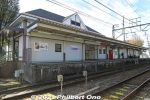
If you're coming from Meitetsu Nagoya Station, you can transfer at Inuyama Station to get on the Kakamigahara Line.3 views
|
|

Fureai Bus Schedule from Kakamigahara Shiyakusho-mae Station. Only once an hour. The museum has the latest bus schedule in Japanese: http://www.sorahaku.net/access/ ふれあいバス3 views
|
|
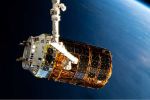
NASA photo of Kounotori. Kounotori was launched on a rocket, released into space, maneuvered to the ISS, then grabbed by the ISS’ robotic arm for docking. 3 viewsAfter the cargo was unloaded, Kounotori was filled with ISS waste materials and dropped to Earth to burn up during re-entry.
“Kounotori” is the Japanese word for stork which can mean “bird of happiness.” Because of this auspicious meaning, “Kounotori” became the nickname of the It certainly was a “bird” delivering happiness and important things. The kounotori stork is endangered in Japan.
|
|
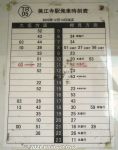
Check the train schedule for your train back to Ogaki (left column) from Mieji Station on the Tarumi Line.3 views
|
|
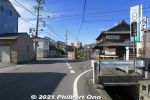
Intersection with a street map board.3 views
|
|
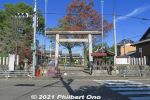
The first major sight in Mieji-juku is Mie Shrine and Mieji Kannon Temple. 美江神社3 views
|
|
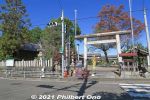
Entrance to Mie Shrine and Mieji Kannon Temple at the corner of the road. 美江神社3 views
|
|
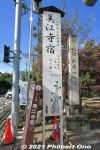
Sign indicating the heart of Mieji-juku.3 views
|
|
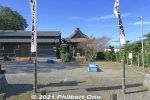
Next to Mie Shrine is Mieji Kanzeon-do Hall. 観世音堂3 views
|
|
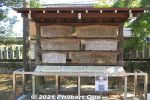
Also at Mie Shrine is this replica of Mieji-juku's Kosatsu official bulletin board. 高札3 views
|
|

Replica of Mieji-juku's Kosatsu official bulletin board. 高札3 views
|
|
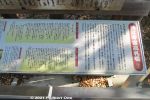
AboutMieji-juku's Kosatsu official bulletin board. 高札3 views
|
|
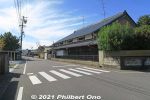
3 views
|
|
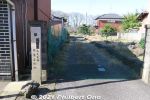
Site of a local school. There's also the site of Mieji Castle nearby, but it is inaccessible (private property it seems).3 views
|
|
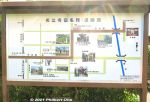
Map of Mieji-juku sights.3 views
|
|
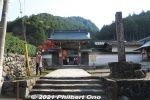
Jion-zenji (also called Jionji) is a Rinzai Zen Buddhist temple (Myoshinji School). On the fringe of central Gujo-Hachiman. Walking distance from the castle.2 views
|
|
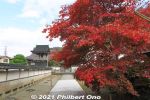
2 views
|
|
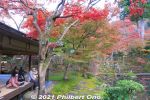
Jion-zenji Temple's Tessoen Zen garden is Gujo-Hachiman's second most famous spot for autumn colors.2 views
|
|
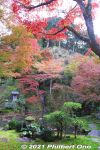
2 views
|
|
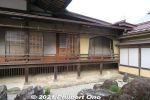
2 views
|
|
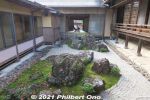
Rock garden in the inner courtyard.2 views
|
|

Jion-zenji worships Yakushi, the healing Buddha. 薬師2 views
|
|
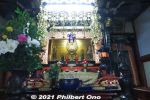
You can pray for whatever you want here. Family harmony, traffic safety, passing exams, business prosperity, recovery from illness, etc., etc.2 views
|
|
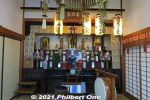
Adjacent altar for other Buddhas.2 views
|
|
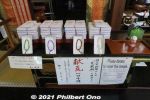
2 views
|
|
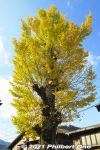
Ginkgo tree at a neighborhood temple.2 views
|
|
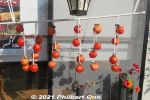
Persimmons out to dry.2 views
|
|
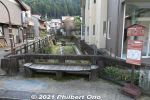
2 views
|
|
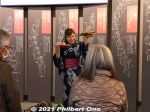
The two dancers demonstrated all ten Gujo Odori dances with recorded music. They also showed how the wooden geta clogs get worn out.2 views
|
|

Gujo Odori dance festival schedule.2 views
|
|
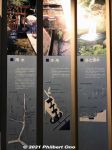
Traditional uses of water in Gujo-Hachiman.2 views
|
|
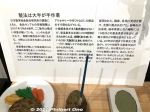
Food replicas used to be made with agar and wax. Now they are made with silicone and resin. Food replica companies founded by Iwasaki still make the most food replicas in Japan.2 views
|
|
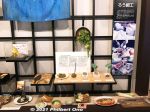
Food replicas.2 views
|
|
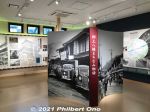
Inside Machinami Koryukan museum.2 views
|
|
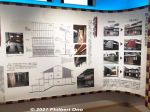
Characteristics of local architecture.2 views
|
|
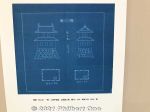
2 views
|
|
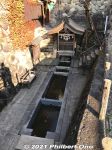
Sogisui natural spring, one of Japan's 100 Famous Natural Springs. 宗祇水2 views
|
|
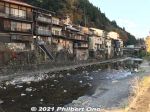
2 views
|
|
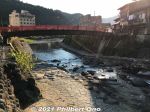
2 views
|
|
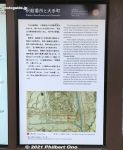
About the Kikoku Guardhouse.2 views
|
|
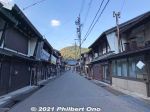
Traditional townscape along a neighborhood called Shokunin-machi where the town's craftsmen lived and worked. 職人町2 views
|
|
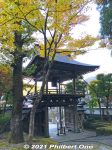
Daijoji Temple gate and bell tower in autumn.2 views
|
|
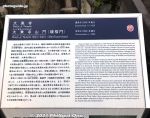
About Daijoji Temple, built in 1603.2 views
|
|
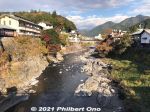
Yoshida River in Gujo-Hachiman looking upstream as seen from Miyagase Bridge. In summer, people fish for ayu sweetfish or swim in the river.2 views
|
|
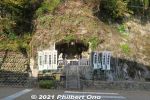
Roadside monument for a poem by Orikuchi Shinobu in 1919. It was a memorial for the victims of a major fire in the northern part of town.2 views
|
|
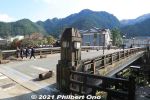
Shinbashi Bridge over Yoshida River. Cross this bridge to the Former Hachiman Town Hall and you will be in Minami-machi or the southern part of town.2 views
|
|
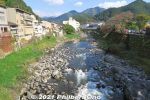
Yoshida River as seen from Shinbashi Bridge.2 views
|
|
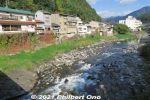
2 views
|
|
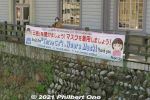
COVID-19 countermeasures.2 views
|
|
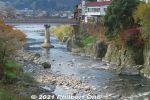
2 views
|
|
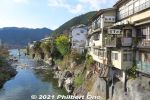
Looking downstream on Yoshida River from Shinbashi Bridge.2 views
|
|
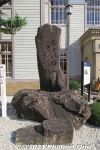
In front of the former Hachiman Town Hall is this monument marking the origin of the Gujo Odori Dance.2 views
|
|

Gift shop inside Former Hachiman Town Hall.2 views
|
|
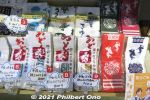
Gujo Odori dance tenugui hand towels.2 views
|
|
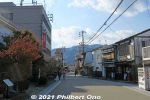
Gujo-Hachiman Post Office on the left.2 views
|
|
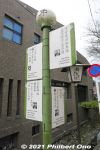
Directional signs in Gujo-Hachiman includes English.2 views
|
|
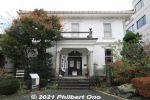
Former Hayashi Clinic. It was closed when I visited.2 views
|
|
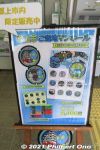
In the post office, stamps showing Gujo-Hachiman's picture manholes.2 views
|
|
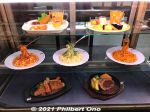
Gujo-Hachiman native Iwasaki Takizo (1895–1965) invented the ubiquitous food replicas we see today in restaurants in Japan. 2 views
|
|
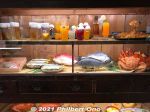
Gujo-Hachiman today makes over 50% of Japan's food replicas. Iwasaki made his first food replica, an omelette, in 1932.2 views
|
|
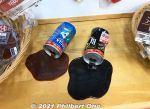
They also offer short lessons to make your own food replicas like spilled coffee. 2 views
|
|

Gujo-Hachiman has a few traditional townscape streets.2 views
|
|
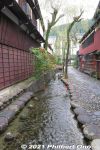
Gujo-Hachiman has a few traditional townscape streets. This is Yanaka Mizu no Komichi (やなか水のこみち). Narrow alley with embedded stones.2 views
|
|
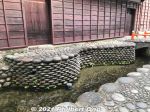
Yanaka Mizu no Komichi, narrow alley with embedded stones.2 views
|
|
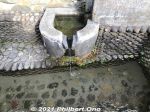
Yanaka Mizu no Komichi2 views
|
|
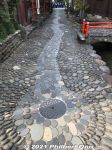
Yanaka Mizu no Komichi with embedded stones.2 views
|
|
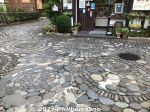
2 views
|
|
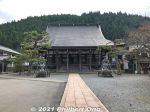
Ganrenji Temple, belonging to the Jodo Shinshu Otani Sect. 願蓮寺2 views
|
|
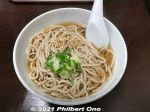
Real soba.2 views
|
|
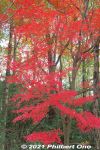
2 views
|
|
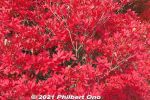
2 views
|
|
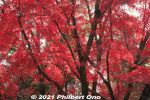
2 views
|
|
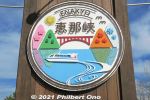
Enakyo marker sign.2 views
|
|
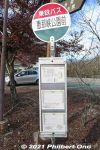
If you take a bus, get off here at Enakyo Koen-mae. Also check the return bus schedule. Buses run very infrequently.2 views
|
|
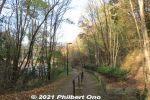
From the bus stop, there's a short path down to the riverside.2 views
|
|

Map of Enakyo. There's a sightseeing boat pier on the left, a few hotels, and a small spit of land that is Sazanami Park, one main attraction.2 views
|
|
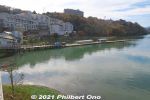
On the left is a pier for sightseeing boats taking tourists to see the unusual rock formations on the gorge. Cruise is 30 min. and fare is ¥1,500. Runs often during autumn. https://www.tohsyoh.jp/ship2 views
|
|
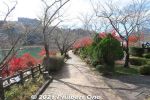
Sazanami Park has a small peninsula with a walking path lined with maple trees (and cherry trees).2 views
|
|
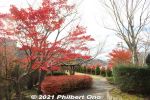
Entering Sazanami Park lined with red maple leaves in mid-November.2 views
|
|
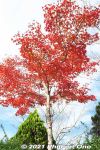
2 views
|
|
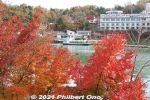
2 views
|
|
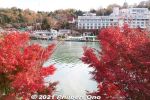
2 views
|
|
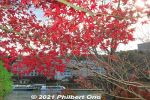
2 views
|
|
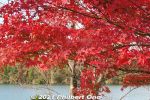
2 views
|
|
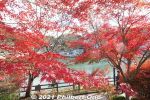
2 views
|
|
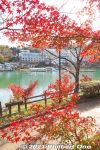
2 views
|
|
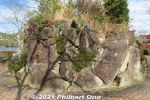
Rocks on the tip of Sazanami Park.2 views
|
|
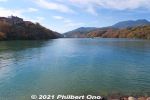
View of Kiso River from the tip of Sazanami Park. Right below Shinonome Ohashi Bridge (東雲大橋) in the distance is Oi Dam built in 1924 as Japan's first hydroelectric dam. The dam created this reservoir in Ena Gorge.2 views
|
|
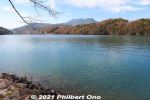
2 views
|
|
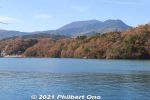
2 views
|
|
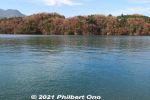
View of the river from the right side of Sazanami Park.2 views
|
|

Upstream toward Enakyo Ohashi Bridge.2 views
|
|
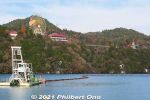
On the right side of Sazanami Park, Ena-kyo Wonderland can be seen on the mountain. An amusement park, closed for winter from Nov. to Feb..2 views
|
|
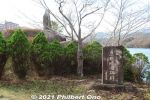
Tanka poetry monument on the tip of Sazanami Park. Lower monument commemorates the development of Enakyo.2 views
|
|
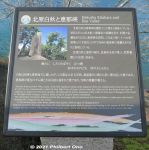
About the tanka poem by poet Kitahara Hakushu.2 views
|
|
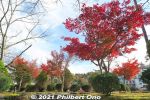
2 views
|
|
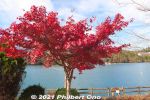
Most maple trees aren't that large, but the river in the background makes them scenic.2 views
|
|
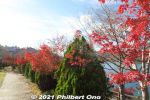
Definitely the right place for red maple leaves. Most were already very red.2 views
|
|
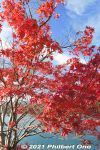
2 views
|
|
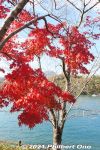
2 views
|
|
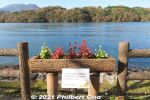
Flowers grown and groomed by Ena Agricultural High School students studying landscape design.2 views
|
|
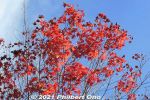
2 views
|
|
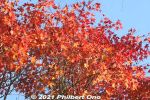
2 views
|
|
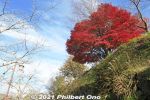
Big maple tree.2 views
|
|
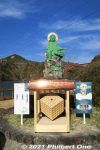
Statue of the goddess Benzaiten and shiny offertory box.2 views
|
|
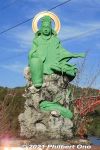
Statue of the goddess Benzaiten, protector against floods and water accidents. Goddess of anything that flows, including music.2 views
|
|
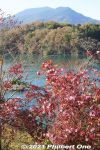
2 views
|
|
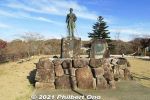
Momosuke Square at the top of Sazanami Park. Statue of Fukuzawa Momosuke, son-in-law of Fukuzawa Yukichi. Momosuke built the Oi Dam that created this Enakyo reservoir and hydroelectric power.2 views
|
|
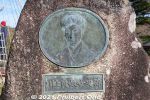
Relief of Kawakami Sadayakko (or Sada Yacco 1871–1946) who was Momosuke's mistress and former geisha who was also previously mistress to Prime Minister Ito Hirobumi. She helped Momosuke build and design seven dams along Kiso River. 川上 貞奴2 views
|
|
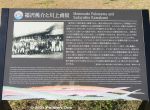
About Fukuzawa Momosuke and Kawakami Sadayakko. Momosuke was inspired by father-in-law Yukichi who said electricity was necessary for Japan's economic development and mechanization.2 views
|
|
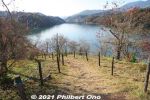
2 views
|
|
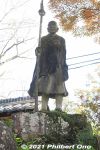
Statue of Buddhist priest Kobo Daishi near the bus stop. Built around 1932 in memory of those who died while building Oi Dam. It was also built to attract tourists. Kobo Daishi founded Shingon Buddhism.2 views
|
|
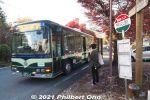
Bus to Ena Station (about 15 min.). They run very infrequently, so be sure to check the return bus schedule.2 views
|
|
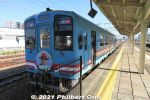
Tarumi Line starts here at JR Ogaki Station. Only one train car on this rural line.2 views
|
|
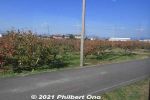
From the train, you see a lot of persimmon groves. This area of Gifu (Mizuho, Motosu, Ibigawa, etc.) is where the fuyu-gaki variety of persimmons (富有柿) originated in the late 19th century.2 viewsNow grown all over western Japan. Gifu Prefecture is Japan's second largest producer of fuyu-gaki persimmons after Nara Prefecture. If you walk around these neighborhoods, you might see persimmons for sale for cheap in front of a house.
Unfortunately, a few of these farmers are seeing thieves stealing their fruit. They will likely install more security cameras.
|
|
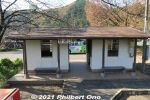
Tanigumiguchi Station, small little train station with no staff.2 views
|
|
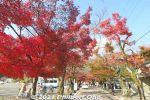
As soon as you get off the shuttle bus and see the path to the temple, you see these maple leaves.2 views
|
|
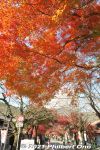
2 views
|
|
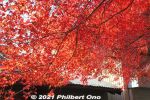
2 views
|
|
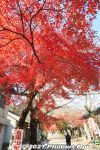
2 views
|
|
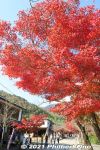
2 views
|
|
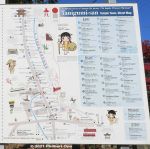
Map of all the gift shops and restaurants along the path to Tanigumi-san.2 views
|
|
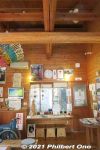
Inside Ibigawa Tourist Information Plaza. 揖斐川町観光プラザ2 views
|
|
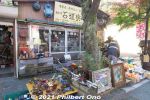
Souvenir shop.2 views
|
|
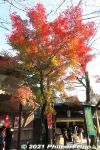
2 views
|
|
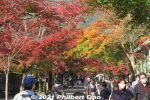
2 views
|
|
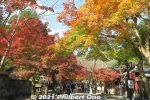
2 views
|
|
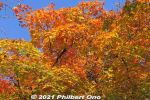
2 views
|
|
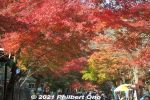
2 views
|
|

2 views
|
|

2 views
|
|
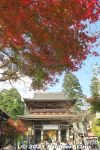
Niomon Gate. Getting closer to the main worship hall.2 views
|
|
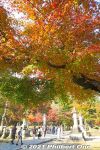
After the Niomon Gate, the path continues along a straight, tree-lined route.2 views
|
|
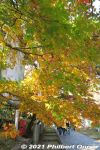
2 views
|
|
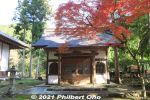
Juodo Hall is a small worhsip hall (closed) on the way to Kegonji. 十王堂2 views
|
|
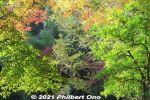
Some greenery too.2 views
|
|
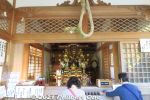
Meioin Temple 明王院2 views
|
|
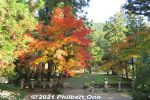
2 views
|
|
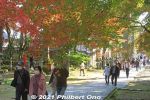
2 views
|
|
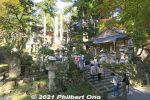
Hall that keeps 33 Kannon statues. Not open to the public. 三十三所堂2 views
|
|
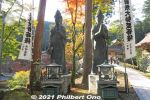
2 views
|
|
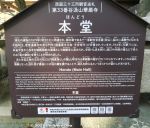
About Tanigumi-san Hondo main hall.2 views
|
|
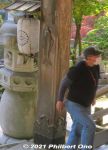
People who completed the 33-temple pilgrimage can rub this fish (made of bronze) to mark the end of their abstinence (精進落ち). The pillar on the left also has a koi fish hanging (not visible).2 viewsThese days, I'm sure most pilgrims do the pilgrimage by car or train. Too far to walk it.
|
|
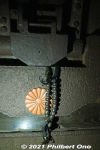
Prayer beads inside the dark, basement passage.2 views
|
|
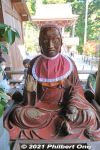
2 views
|
|

2 views
|
|
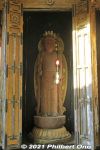
2 views
|
|
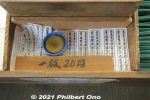
Paper prayer labels (¥20).2 views
|
|
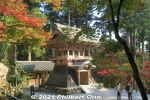
Tanigumi-san bell tower.2 views
|
|
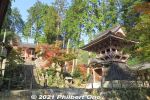
Tanigumi-san bell tower and shrine.2 views
|
|
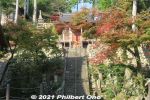
Shinto shrine.2 views
|
|
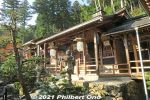
Oizurudo is where pilgrims who completed the 33-temple Saigoku pilgrimage offer their pilgrimage implements. (笈摺堂)2 views
|
|
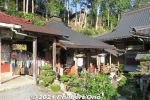
Oizurudo (笈摺堂)2 views
|
|
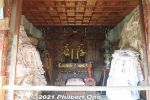
Pilgrims who complete the Saigoku Pilgrimage supposed to visit three buildings at this No. 33 temple. Besides the Hondo main hall, there is this small altar hall called Oizurudo (笈摺堂).2 views
|
|
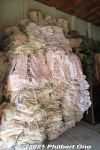
The Oizurudo altar hall is where pilgrims who completed the 33-temple Saigoku pilgrimage offer their pilgrimage implements. 2 viewsYou can see walking sticks, Chinaman's hats, and a lot of pilgrims' white oizuru (笈摺) vests (photo) which are like sleeveless happi coats or haori. The pilgrims have it stamped with each temple's vermillion stamp.
|
|
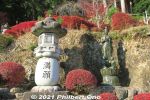
Mangan stone lantern and Kannon statue2 views
|
|
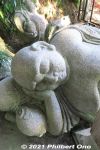
2 views
|
|
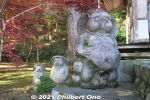
Tanuki is a raccoon dog considered to be an auspicious symbol commonly decorating the entrance to a shop or restaurant.2 views
|
|
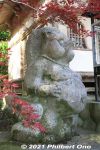
The word "Mangan" means "fulfillment of one's prayer/request" in reference to the completion of the 33-temple pilgrimage. People who complete the pilgrimage are considered to be superior to others. 2 viewsAnd so the Japanese phrase "ta wo nuku" (他を抜く), meaning "surpassing others," applies to them. Since "ta wo nuku" almost sounds like "tanuki," they have all these tanuki here.
|
|
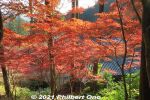
2 views
|
|
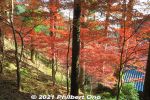
2 views
|
|
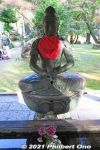
2 views
|
|
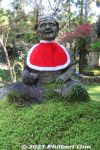
2 views
|
|
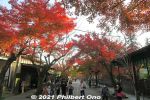
Walking back to the bus stop in late afternoon light.2 views
|
|
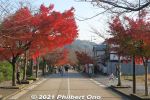
2 views
|
|
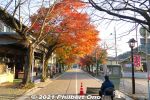
2 views
|
|
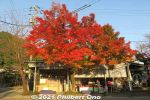
2 views
|
|
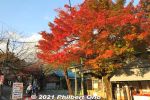
2 views
|
|
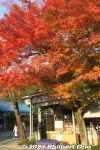
2 views
|
|

2 views
|
|
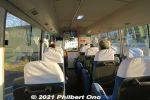
Going to ibi Station.2 views
|
|
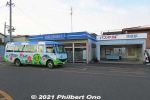
Bus stop at ibi Station.2 views
|
|
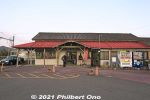
Ibi Station.2 views
|
|

Map of Ibigawa Town.2 views
|
|
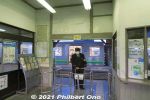
2 views
|
|
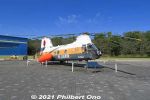
Kawasaki-Vertol KV-107IIA-4 helicopter that was used by the Japan Air Self-Defense Force from 1973 to 1995. 川崎 V107-Aヘリコプター2 views
|
|
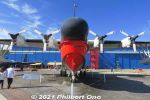
Nose of US-1A 90782 views
|
|
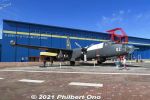
P-2J was an anti-submarine patrol aircraft. Detects and attacks submarines. Flew from 1979 to 1994. 川崎P2-J対潜哨戒機2 views
|
|
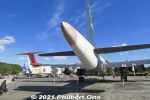
Rear of P-2J.2 views
|
|
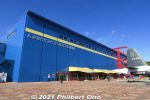
Museum's big, blue, two-story building is like an airplane hangar. The first floor has over 30 retired airplanes and replicas. The second floor has space-related exhibits. Expect to spend at least a few hours.2 views
|
|
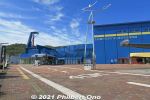
Entrance to the museum is here on the left side of the building. Admission charged. (Free admission on Nov. 3, Culture Day.)2 views
|
|
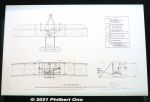
About the Wright Flyer.2 views
|
|
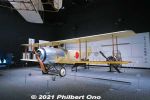
Salmson 2A2 was built in Gifu under a license from France. Production started in 1922 by Kawasaki Dockyard Co., Ltd., starting Japan's aviation industry. 乙式一型偵察機(サルムソン2A2)2 views
|
|
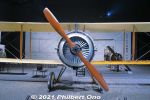
Front of Salmson 2A2. 乙式一型偵察機(サルムソン2A2)2 views
|
|
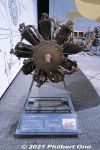
La Rhone propeller engine Type C commonly used in planes from 1910 to 1920.2 views
|
|
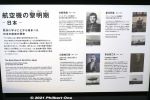
Japanese aviation industry pioneers.2 views
|
|

All the planes which first flew in Japan here in Kakamigahara.2 views
|
|

Chronology of Japan's aviation history.2 views
|
|
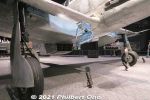
Kawasaki Ki-61 Hien fighter2 views
|
|
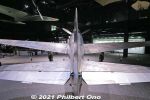
Rear of Kawasaki Ki-61 Hien fighter.2 views
|
|

About Kawasaki Ki-61 Hien fighter. 三式戦闘機二型「飛燕」(川崎キ61-II改)2 views
|
|
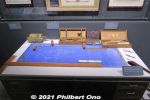
Airplane design drafting table and implements.2 views
|
|
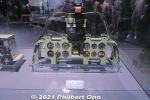
川崎 ハ140エンジン(「飛燕」二型搭載)2 views
|
|
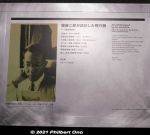
About Horikoshi Jiro who designed the Zero fighter and later the YS-11.2 views
|
|
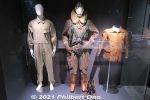
L-R: Aircraft mechanic's uniform, fighter pilot's flight suit, and pilot's jacket. Dating from the 1930s-40s.2 views
|
|
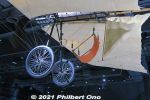
2 views
|
|
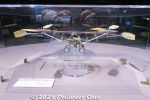
2 views
|
|
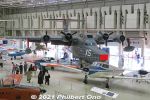
2 views
|
|
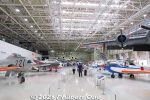
2 views
|
|
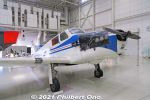
Kawasaki KAL-1 2 views
|
|
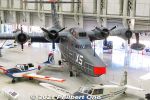
UF-XS Experimental Flying Boat2 views
|
|

Open door of UF-XS Experimental Flying Boat.2 views
|
|
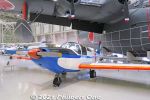
X1G1B High-Lift Research Aircraft based on Saab 91B Safir. 2 views
|
|
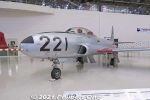
Lockheed T-33A2 views
|
|
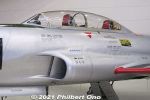
Lockheed T-33A cockpit.2 views
|
|
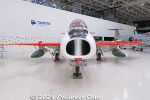
Fuji T-1B2 views
|
|
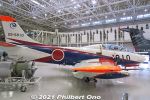
Fuji T-1B2 views
|
|
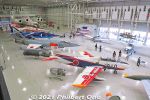
Fuji T-1B2 views
|
|
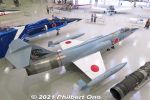
Mitsubishi-Lockheed F-104J Starfighter dating from 1963. Retired in 1986.2 views
|
|
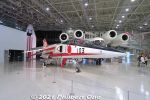
Mitsubishi T-2 Control-Configured Vehicle (CCV) Research jet. T-2CCV研究機2 views
|
|
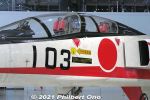
Research jet. T-2CCV研究機2 views
|
|
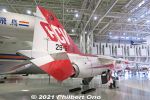
2 views
|
|
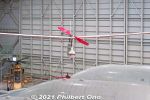
KoToNo Limited also placed 4th at the 16th Birdman Rally at Lake Biwa in Aug. 1992.2 views
|
|
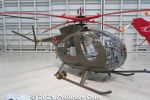
Kawasaki-Hughes OH-6J helicopter from 1974.2 views
|
|
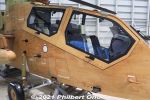
Kawasaki XOH-1 wooden mockup helicopter cockpit.2 views
|
|
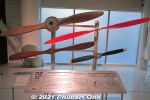
Different airplane propellers. Very detailed info about most of the museum's planes is at j-hangarspace.jp.2 views
|
|

The space-related exhibits are on the 2nd floor.2 views
|
|
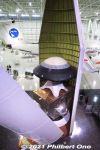
H-II rocket and payload. H-IIロケット フェアリング2 views
|
|
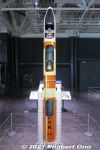
H-II two-stage rocket made with 100% Japanese technologies.2 views
|
|
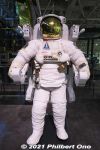
NASA astronaut spacesuit and propulsion unit (actual size). 宇宙服と宇宙遊泳噴射装置(1/1模型)2 views
|
|
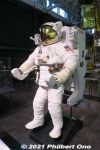
NASA astronaut spacesuit and propulsion unit (actual size). 宇宙服と宇宙遊泳噴射装置(1/1模型)2 views
|
|

Japan's Kibo experiment module (full-scale replica) for International Space Station (ISS). We can go inside. 日本実験棟「きぼう」2 views
|
|
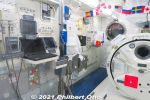
Inside Japan's Kibo module (replica) for International Space Station (ISS).2 views
|
|
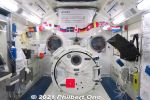
Inside Japan's Kibo module (replica) for International Space Station (ISS). The module is used to conduct various experiments in space.2 views
|
|

After nine launches and cargo spacecrafts, Kounotori was finally retired in Aug. 2020. Kounotori will be replaced with a new cargo spacecraft to launch in 2022. Nickname unknown as of this writing. 2 views
|
|

Mohri Mamoru became the first Japanese astronaut to be sent by Japan's space program in Sept. 1992. The first Japanese astronaut to travel on the US Space Shuttle (Endeavour) where he worked in Spacelab-J.2 viewsThe third Japanese in space was the first Japanese and first Asian woman in space, Mukai Chiaki, a cardiovascular surgeon.
|
|
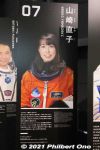
Japanese astronaut Yamazaki Naoko went aboard US Space Shuttle Discovery in April 2010 to the International Space Station (STS-131). More photos of her and her mission here.2 viewsShe is also the Gifu-Kakamigahara Air and Space Museum's ambassador.
|
|

Exhibit about KAGRA (Kamioka Gravitational Wave Detector) in Kamioka Observatory in Gifu Prefecture.2 views
|
|

Section S5 is about space probes to learn more about the origin of space and life.2 views
|
|
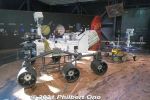
Mars rover nicknamed "Curiosity." Landed on Mars in Aug. 2012. キュリオシティ(1/1模型)2 views
|
|

Passenger jets that made long-distance travel practical. Thanks to the revolutionary jet engine. Upper photo is a DC-6 prop plane that first flew in 1947 and which JAL used for its first overseas flight. Lower photo is a DC-8 jet plane first flew in 1958.2 views
|
|
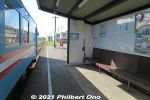
Mieji Station platform on the Tarumi Line.2 views
|
|
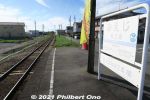
Mieji Station platform on the Tarumi Line.2 views
|
|
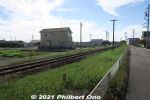
From Mieji Station, walk this way south.2 views
|
|
| 2989 files on 12 page(s) |
 |
 |
 |
 |
11 |
|